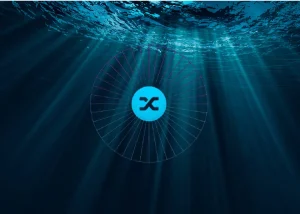2023 has been nothing short of a renaissance year for blockchain technology. Despite the tumultuous events of the previous year, including the collapse of the Terra ecosystem and the bankruptcy of FTX, the blockchain sector has not just survived; it has thrived with significant technological advancements.
This year, we’ve witnessed groundbreaking developments that have redefined what blockchain technology can achieve, making it faster, more secure, and more private.
Revolutionary Strides in Zero-Knowledge Technology
A standout development in the blockchain world this year has been the emergence and implementation of zero-knowledge (zk) rollups.
We’ve seen the debut of several innovative zk rollups like zkSync Era, Polygon’s zkEVM, Linea, and the ambitious projects of the =nil; Foundation.
These rollups aim to streamline blockchain functionality by reducing the block space needed for transactions and moving more operations off-chain.
This innovation not only enhances efficiency but also slashes gas fees and fixed costs, making blockchain operations more cost-effective.
What sets zero-knowledge rollups apart is their ability to verify off-chain transaction execution without revealing the transaction data on the mainnet.
This is a leap forward from optimistic rollups, which operate on the assumption of transaction accuracy and depend on fraud proofs for validation.
However, there’s still room for growth and refinement in zkRollups, particularly in achieving full decentralization and addressing upgradability risks.
These risks, relating to the potential for blockchain modification or upgrades, are crucial for ensuring blockchain security and integrity.
Unleashing New Levels of Interoperability
2023 also marked a significant year for blockchain interoperability, with various initiatives aimed at connecting disparate blockchain networks.
The launch of Chainlink’s CCIP and the recent collaboration between LayerZero, Google Cloud, and JPMorgan are testament to the growing efforts in bridging various public and private blockchains.
Interoperability protocols are now enabling smart contracts from different blockchain networks to interact seamlessly, facilitating liquidity transfers in innovative ways.
Token burning and minting across chains and the use of bridging techniques for token transfers are revolutionizing how assets move across the blockchain ecosystem.
Users are now able to swap, lend, and stake tokens across multiple blockchains with minimal fees, thanks to these interoperability tools.
Tokenization: Bridging Blockchain and Real-World Assets
A significant focus of 2023 has been on integrating real-world assets (RWAs) into the blockchain through tokenization.
This process aims to bring greater liquidity to the blockchain by using real-world assets like cash, gold, real estate, and US treasury bonds as collateral.
Stablecoins such as Circle’s USDC and Tether’s USDT, prevalent in DeFi protocols, are prime examples of RWAs in action.
Protocols like Centrifuge, Maple Finance, and Goldfinch have been at the forefront of on-chain financing, exploring innovative ways to utilize RWAs.
This integration is not just about adding value to the blockchain ecosystem; it’s about creating a symbiotic relationship between traditional financial assets and the burgeoning world of decentralized finance.
2023 has been a watershed year for blockchain technology, marked by remarkable advancements in zero-knowledge rollups, blockchain interoperability, and the tokenization of real-world assets.
These developments have not only enhanced the efficiency, security, and privacy of blockchain operations but have also opened up new avenues for integrating traditional financial systems with the dynamic world of blockchain.
As we look ahead, the potential for further innovations in the blockchain space seems limitless, promising an even more interconnected and efficient future.





